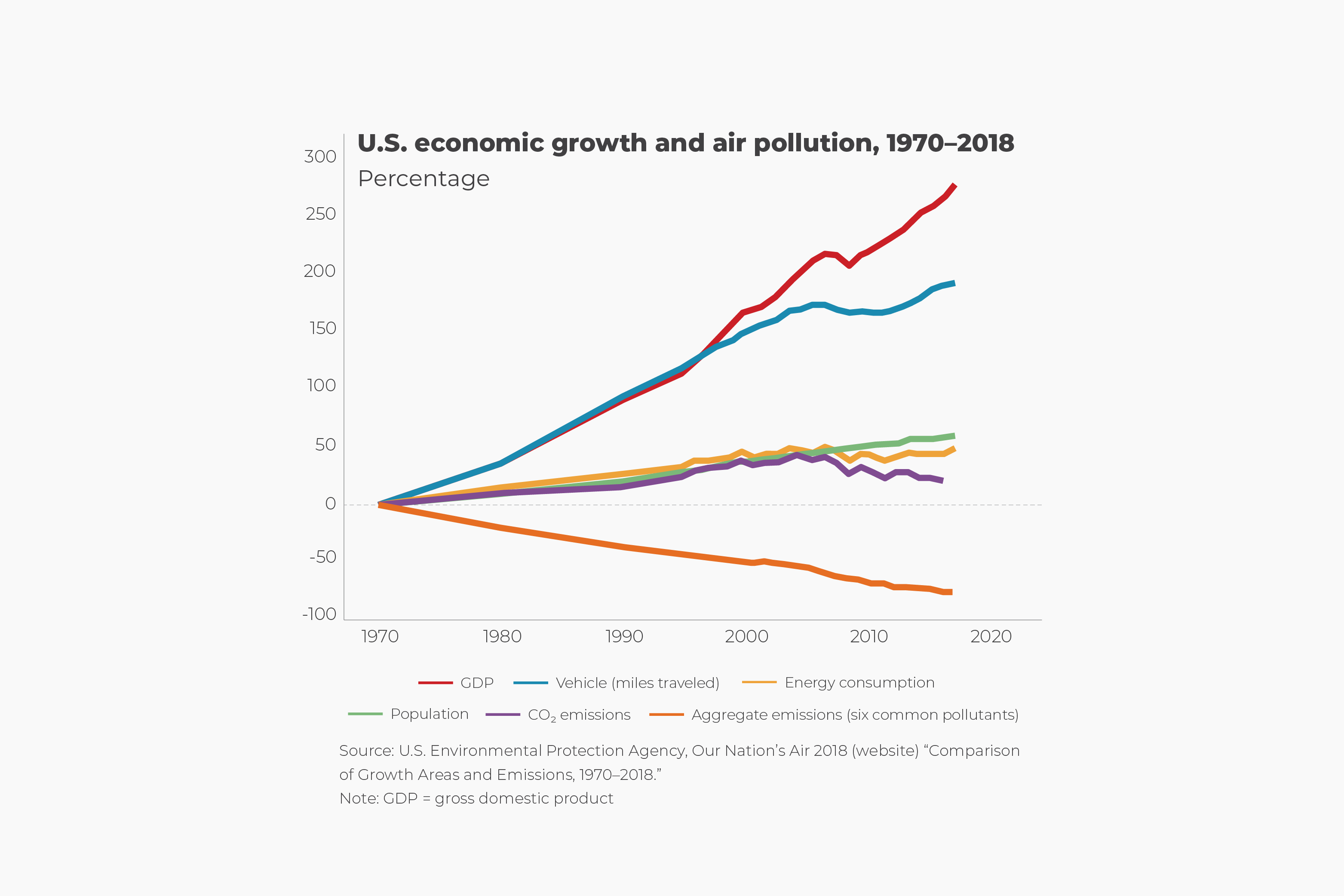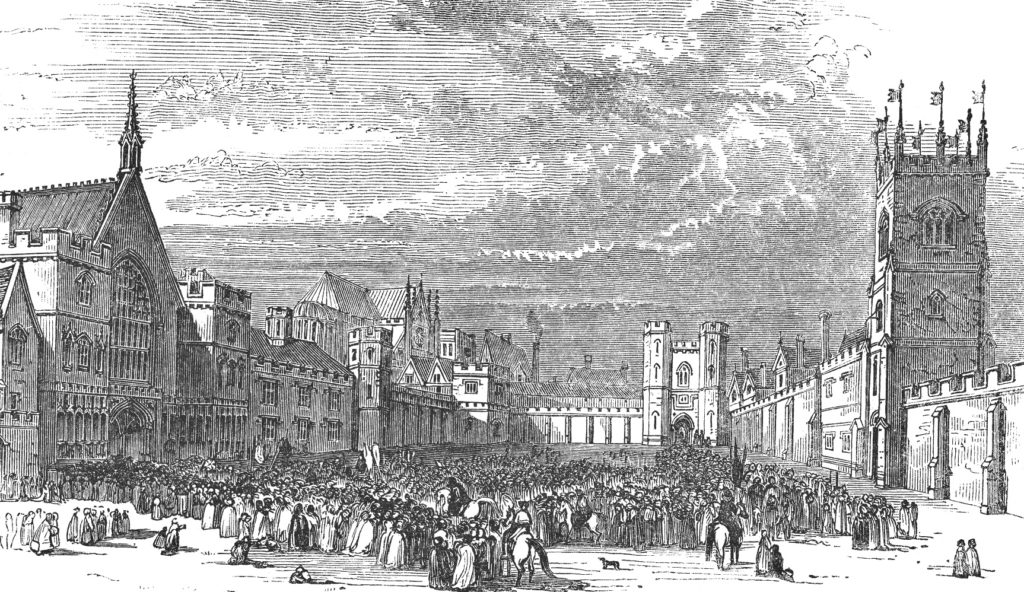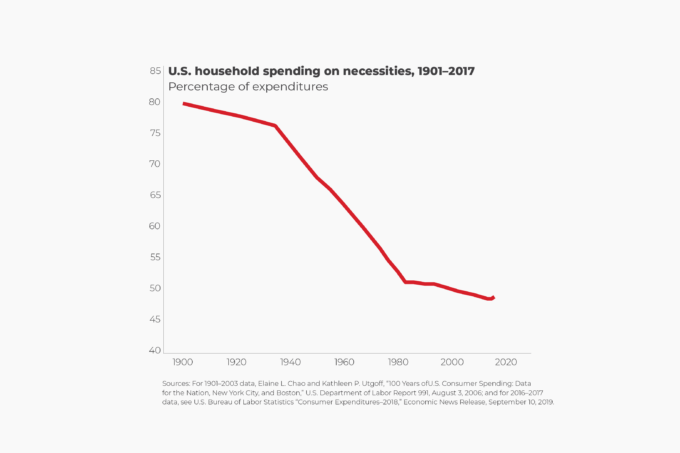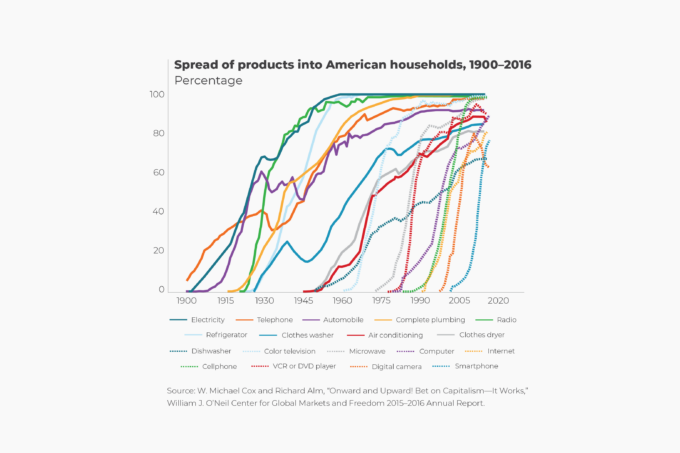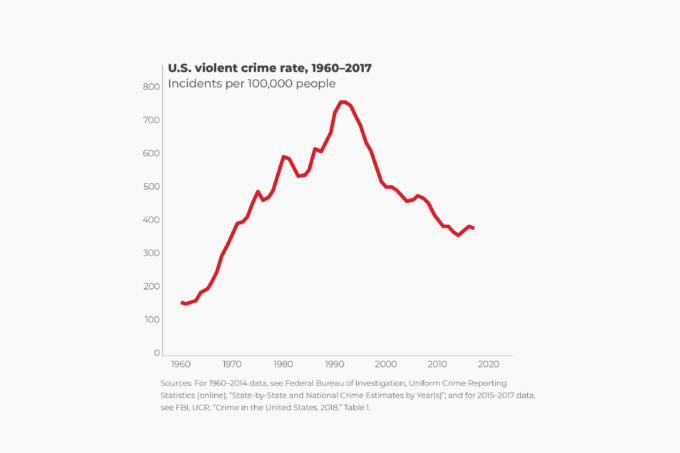The Clean Air Act of 1970 requires the Environmental Protection Agency to set National Ambient Air Quality Standards for six common air pollutants: carbon monoxide, lead, nitrogen dioxide, ozone, particulates such as smoke, and sulfur dioxide.
That doesn’t mean that Americans didn’t care about the air they breathed before 1970. Many American cities responded to rising noxious levels of air pollution by adopting smoke abatement ordinances in the late 19th century. As a result of local municipal action, emissions of smoke, soot, ozone, and sulfur dioxide had been falling for decades before the creation of the EPA.
For example, ambient sulfur dioxide had fallen by 58 percent in New York City during the seven years preceding the adoption of the Clean Air Act. Between 1980 and 2018, according to the EPA, emissions of carbon monoxide fell by 73 percent; lead, by 99 percent; nitrogen oxides, by 62 percent; compounds from automobile exhaust associated with ozone, by 55 percent; sulfur dioxide, by 90 percent; and particulates, by 61 percent.
The EPA reports that between 1970 and 2018, U.S. gross domestic product increased 275 percent, vehicle miles traveled increased 191 percent, energy consumption increased 49 percent, and the U.S. population grew by 60 percent. In addition, carbon dioxide emissions increased by 22 percent. During the same period, total emission of the six principal air pollutants dropped by 74 percent.
More than two decades ago, economics scholars devised the environmental Kuznets curve hypothesis that posits that environmental conditions initially deteriorate as economic growth takes off, but later improve when citizens with rising incomes demand better-quality environmental amenities. Considerable evidence now backs the notion that increasing wealth from economic growth correlates with a cleaner natural environment—that is to say, richer becomes cleaner.

